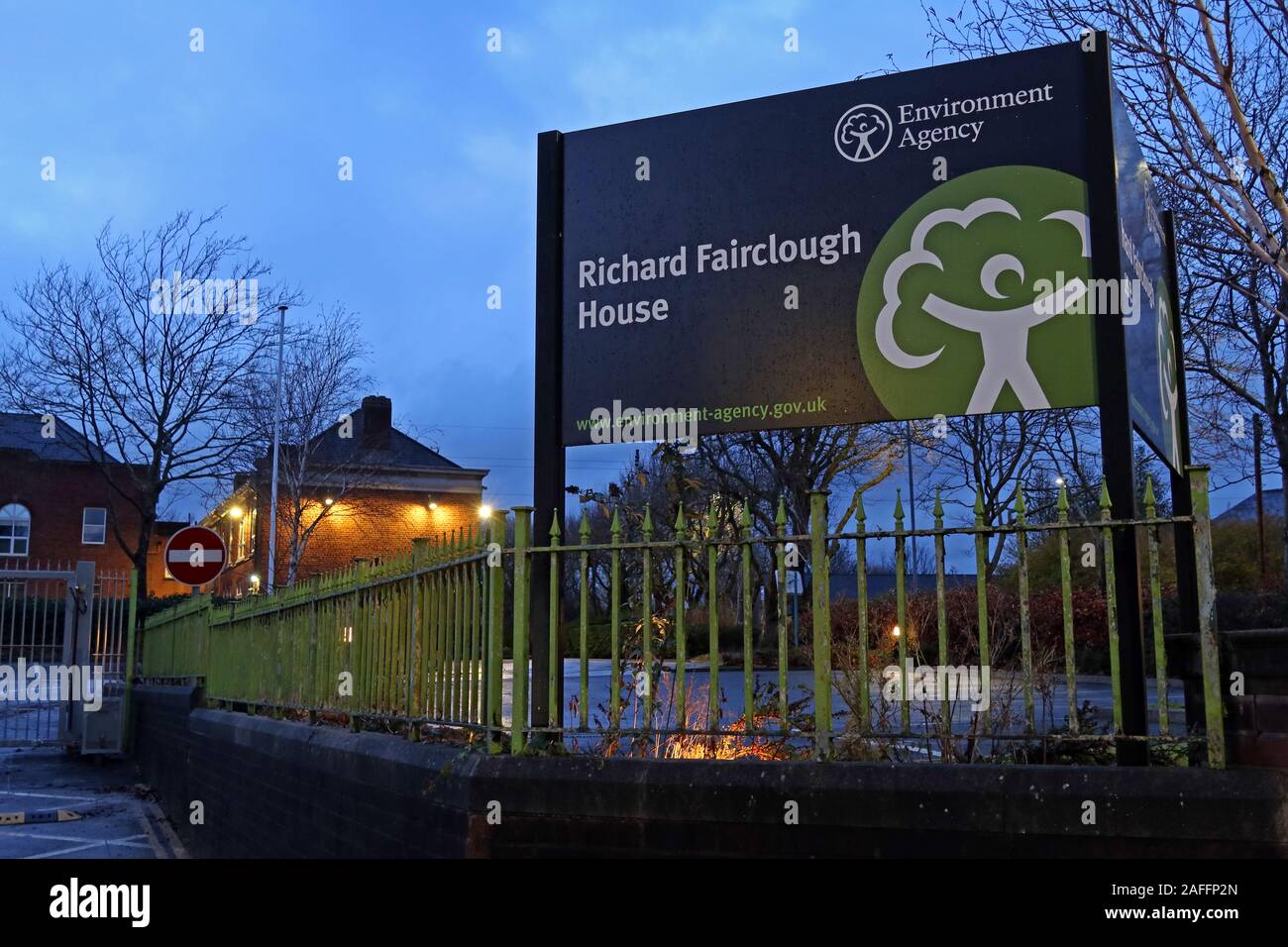Richard Fairclough House, The Environment Agency, Latchford, Warrington,Cheshire, England, UK, at dusk

Image details
Contributor:
Tony Smith / Alamy Stock PhotoImage ID:
2AFFP2NFile size:
57.1 MB (2.1 MB Compressed download)Releases:
Model - no | Property - noDo I need a release?Dimensions:
5472 x 3648 px | 46.3 x 30.9 cm | 18.2 x 12.2 inches | 300dpiDate taken:
15 December 2019Location:
Richard Fairclough House, Knutsford Rd, Latchford, Warrington, Cheshire, England, UK, WA4 1HTMore information:
The Environment Agency (EA) is a non-departmental public body, established in 1995 and sponsored by the United Kingdom government's Department for Environment, Food and Rural Affairs (DEFRA), with responsibilities relating to the protection and enhancement of the environment in England (and until 2013 also Wales). Purpose The Environment Agency's stated purpose is, "to protect or enhance the environment, taken as a whole" so as to promote "the objective of achieving sustainable development" (taken from the Environment Act 1995, section 4). Protection of the environment relates to threats such as flood and pollution. The vision of the Agency is of "a rich, healthy and diverse environment for present and future generations". Scope The Environment Agency's remit covers almost the whole of England, about 13 million hectares of land, 22, 000 miles (35, 000 km) of river and 3, 100 miles (5, 000 km) of coastline seawards to the three-mile limit which includes 2 million hectares of coastal waters.[2] In a sharing arrangement with the Scottish Environment Protection Agency (SEPA), it also exercises some of its functions over parts of the catchments of the River Tweed and the Border Esk which are, for the most part, in Scotland. Similarly, in an arrangement with NRW, political and operational areas are not coterminus. NRW staff exercise responsibility for parts of the River Dee (Wales) in England and EA staff exercise operational responsibility for those parts of the River Severn catchment in Wales. Structure The Environment Agency employs around 11, 200 staff. It is organised into eight directorates that report to the chief executive. There are two "policy and process" directorates. One deals with Flood and Coastal Risk Management and the other with Environment and Business. These are backed up by the Evidence directorate. The fourth directorate is a single Operations "delivery" unit, responsible for national services, and line management of all the Regional and Area staff.